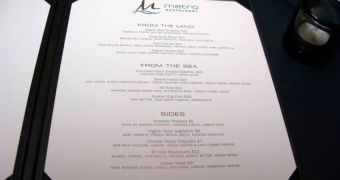A new scientific investigation has uncovered the fact that Americans tend to order healthy foods while going out, if all the nutritional values for every product are inscribed on the menu. As more and more people discontinue the century-old tradition of eating indoors with the family, and start having most of their meals in restaurants or fast-food places, the incidence of obesity spreads like wildfire within the general population. In addition to making individuals fat, this food is also poor in nutrients, and researchers believe that most of the general population knows these things.
An impressive number of studies have linked eating outside the home, especially in fast food restaurants, to a higher risk of developing weight-related conditions, so experts now believe that labeling each product with its real nutritional value should become mandatory for all restaurants. “Using only the sense of taste, smell, and sight to accurately estimate the levels of calories, saturated fat, trans fat, and sodium found in a typical restaurant food serving is extremely difficult, if not impossible, for most consumers,” the conclusion of a new scientific study, published in a recent issue of the Journal of Consumer Research, reads.
Experts Elizabeth Howlett, from the University of Arkansas, Scot Burton, from the Sam M. Walton College of Business, Kenneth Bates, from the University of San Diego, and Kyle Huggins, from the James Madison University have collaborated for this research, which has been aimed at understanding how more displayed nutritional data influences people's choices in public restaurants.
That is to say, they have looked at the way individuals have analyzed the data that is written on the menu, and what line of thought each of them has followed in their assessment of which food they should order. The team has noticed that extra nutritional data can significantly alter their choices, especially when unverifiable or false claims are written in the menu.
They explain that, “When a 'great taste' claim was used to describe a restaurant menu item, the provision of calorie information did not affect consumers' perceptions, presumably because foods that claim great taste are typically expected to be relatively high in calories. On the other hand, when a 'low calorie' claim was presented but the menu item was higher in calories than expected, the provision of nutritional information increased the perceived likelihood of 1) gaining weight and 2) developing heart disease.”

 14 DAY TRIAL //
14 DAY TRIAL //